Perched on a cliff overlooking the turquoise Tyrrhenian Sea, Tropea is still under-the-radar for international travelers, but it’s a summer playground for Italians. Marco and I visited last summer on a road trip through Puglia and Calabria and were utterly enchanted by it. The town is famous for its beautiful beaches and its prized red onions, which have a more delicate flavor than normal onions.
I’d been curious about Calabria for years, but didn’t really know where to go. The toe of the boot, it’s relatively undeveloped when it comes to tourism. The big international hotel brands have not yet set their sights on this region and it’s not exactly the easiest place to get to. (There is a train station in Tropea, but it’s not served by high-speed trains, only regional trains.)
Those who make the effort, though, will be rewarded with pristine beaches awarded the Blue Flag for cleanliness and sustainability, a charming town full of lively restaurants, bars, and shops, and excellent cuisine.
Legend has it Tropea was founded by Hercules, who found respite here after successfully completing the 12 labors. In fact, archeologists have found evidence that this area has been inhabited since the Bronze Age and was part of Magna Grecia, inhabited by Greeks before the Romans. In subsequent centuries, it was ruled by the Arabs, Byzantines, Normans, and Aragonese, who all left their mark on the town.
Nowadays, it’s easy to see why this town on the Coast of the Gods is designated one of the Borghi Più Belli d’Italia (most beautiful villages in Italy). The lavender town hall presides over the main square, Piazza Ercole, where people gather at sidewalk cafes for aperitivo on hot summer evenings.
The cobblestone streets branching off the piazza are lined with shops selling summer clothes, swimsuits, beach bags, and other accessories. There are bustling trattorias all throughout the town center. Families line up at the gelaterias and teenagers gather with their friends. From the Belvedere, you can take in the sweeping views of the beaches below and the Sanctuary of Santa Maria dell’Isola. It’s a very lively scene.
We stayed at Villa Paola, a boutique hotel in a 16th-century monastery about a 15-minute walk from the centro storico. And let me tell you—those monks sure knew how to pick a good location. As soon as we arrived, the staff led us out to the garden to sit and have a refreshing bergamot-scented drink while we checked in—and the views of the sea simply blew me away. That evening, we had dinner at the hotel’s gourmet restaurant De’ Minimi.
The next morning, I wandered the terraced gardens, taking in the fragrant jasmine and rosemary. After breakfast of bread with apricot-flecked butter made using fruit grown in the property’s gardens, we drove 20 minutes to its sister hotel, Capovaticano Resort & Thalasso Spa, to relax at the beach club.
Though Capovaticano is larger than Villa Paola, the beach club wasn’t crowded at all. In fact, I was amazed by how calm the beach was. There was plenty of space between the plush sunbeds. Perhaps this beach isn’t as popular as others because the water gets quite deep very close to the shore, making it less than ideal for families with young children. But as soon as I waded in, I saw little fish swimming around my feet.
We had a nice lunch at Capovaticano Resort and stayed for a massage at the spa. There I met Marie Christine Born, the Swiss-born owner of Villa Paola and Capovaticano Resort, who told me how she fell in love with Tropea in the 1970s and never left.
“For a 22-year-old Swiss woman who wanted to build a hotel everything was within reach: handicraft, delicious culinary recipes, vegetable gardens and orchards that produce food all year round, strong and helpful people and a beautiful sea and mountains very close, a real Eden,” she told me later. “Then there is a slow life and a tranquility that have been lost elsewhere.”
That evening, we ventured into the center of town for an evening stroll and a light dinner at La Dispensa by BO.CA, which serves elaborate meat and cheese boards and sandwiches. When in Tropea, you should definitely try the onion jam made with Tropea onions, caciocavallo cheese, and ‘nduja, a spicy spreadable sausage.
The next day, on the way to our next destination, we pulled over at La Capannina, a farm stand on the side of the road, where garlands of red onions and chili peppers were hanging in the wind. This summer, on the way home from Sicily, we stopped there again to buy more of those magical onions. I already used a kilo of them to make a version of
’s recipe for onion strudel. When I finish the rest, we’ll just have to go back again.Further Reading
If you’re intrigued, check out this article I wrote about Tropea for Travel + Leisure after my trip.
I also included Tropea in this list of the best beach towns in Italy for T+L and this list of 12 small towns in Italy that look like storybook villages for AFAR.
Want to learn more about Villa Paola? Check out my review for Italy Magazine’s ‘Inspired Stays’ series.
Want to try making onion strudel? You can find Giulia’s recipe here.
You can see all of the New Roman Times’ coverage of under-the-radar destinations here.





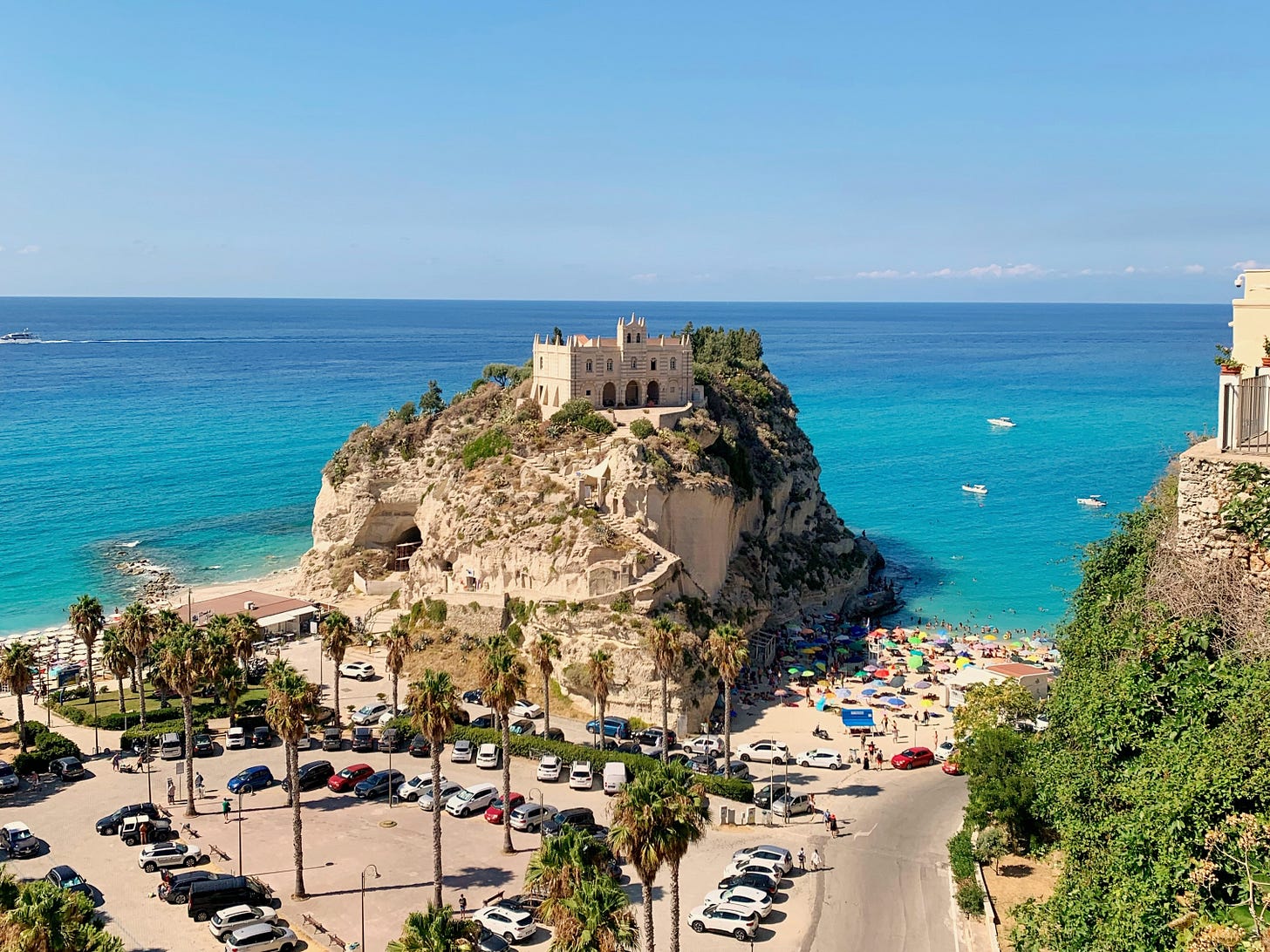
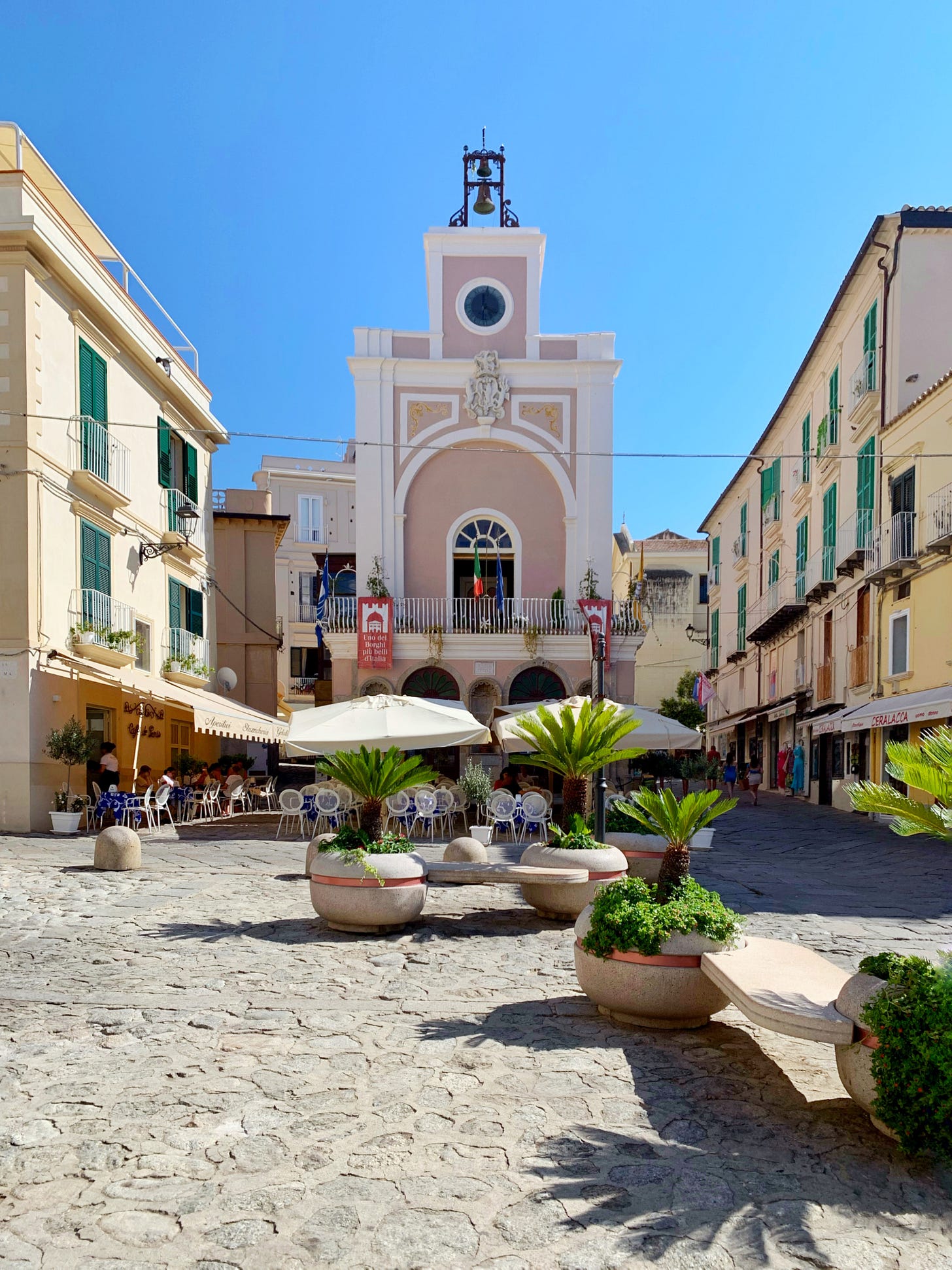
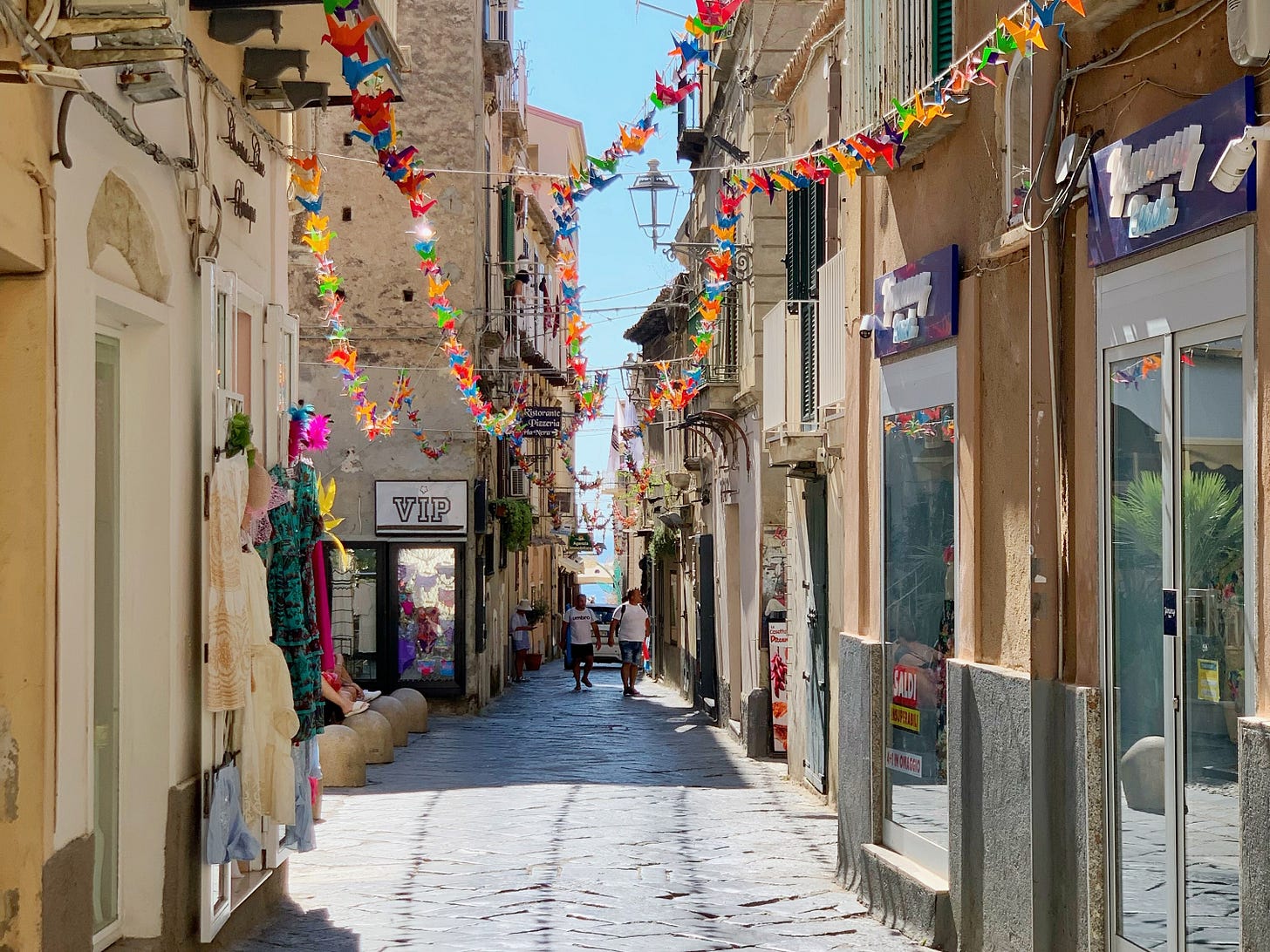

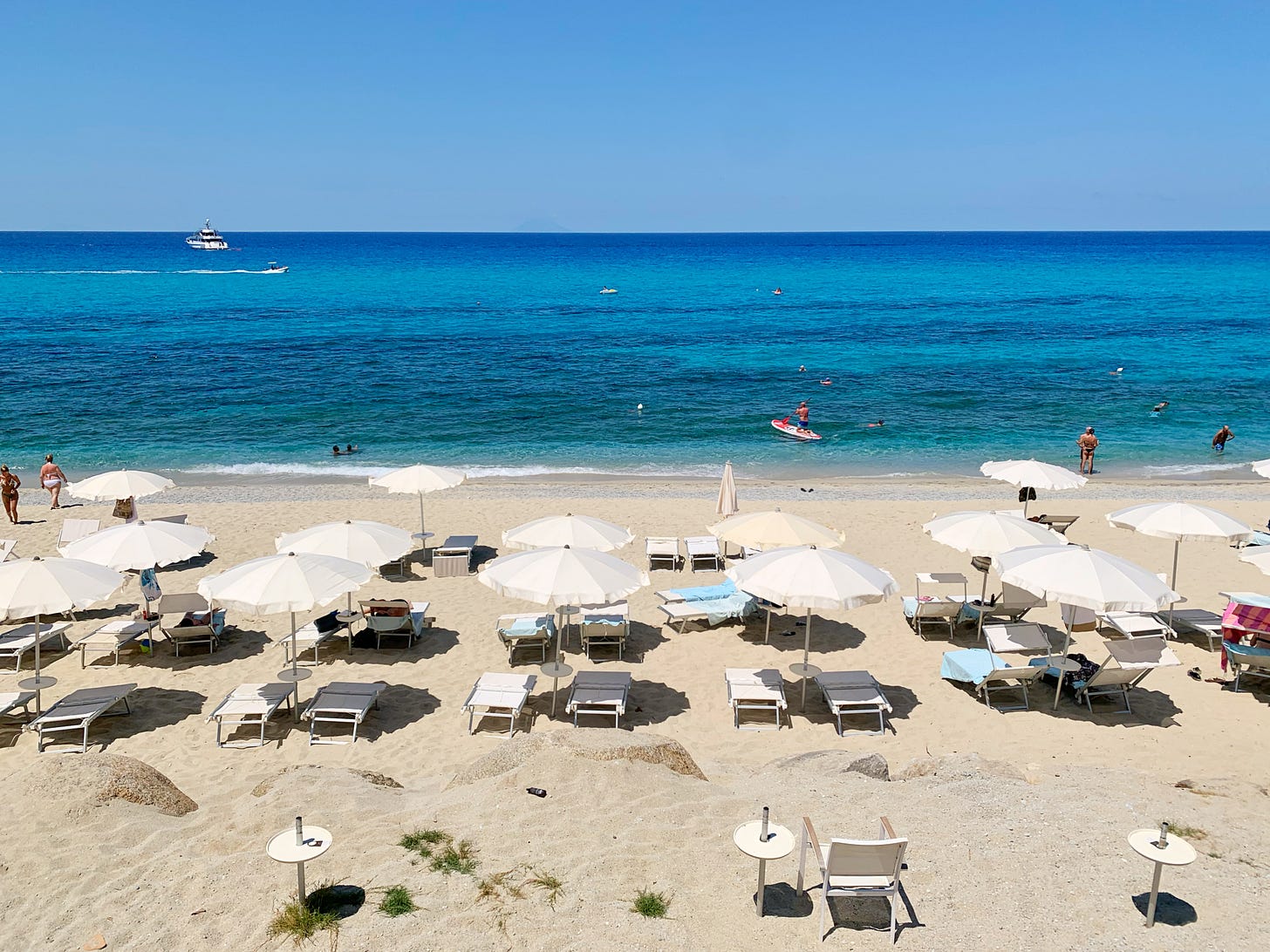
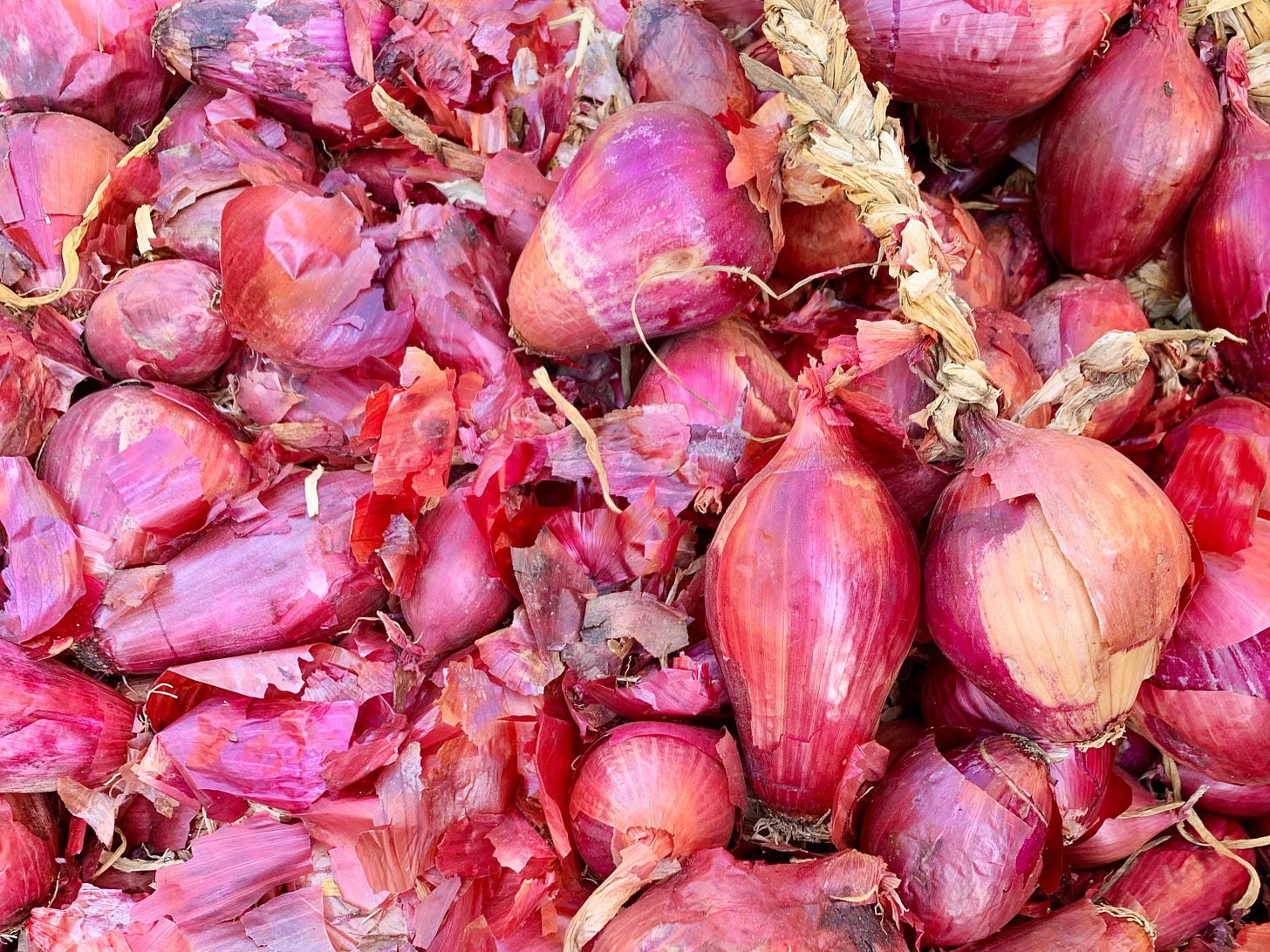
We've stared across the Straits of Messina to the mainland but have yet to make the trip. Now I see that we really must!